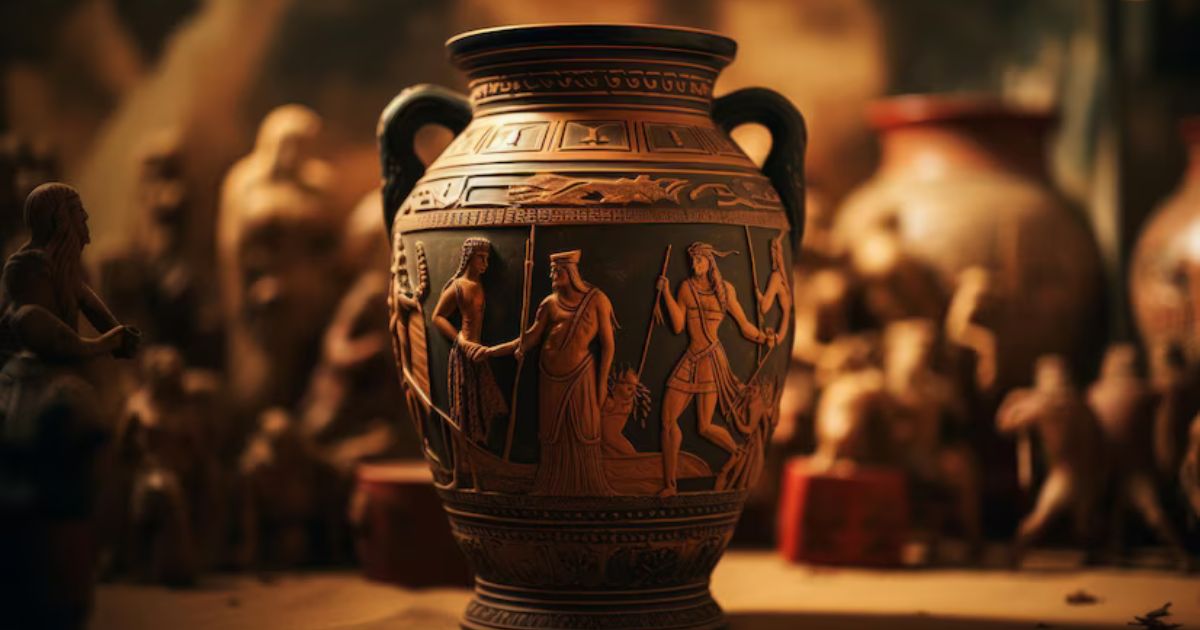Ancient artz has been an integral part of human civilization since the dawn of time. It is a reflection of culture, beliefs, and the human experience. Ancient art is the foundation upon which much of today’s artistic practices are built, offering insights into how early civilizations expressed themselves and understood the world around them. This article delves deep into ancient art, exploring its origins, key civilizations, and lasting impact on the art world.
What is Ancient Art
Ancient art refers to the creative works produced by early human civilizations, typically ranging from prehistoric times through the fall of the Roman Empire in the West. This includes a wide variety of mediums, such as paintings, sculptures, pottery, and architecture. Ancient art often served religious, ceremonial, and practical purposes, revealing much about the societies that created it.
The Origins of Ancient Art
The origins of ancient art date back to prehistoric times, with the first artistic expressions found in caves and on stone carvings. These early works, such as the famous Lascaux cave paintings in France, are believed to have been created as part of hunting rituals or as spiritual symbols. They primarily depict animals, human figures, and geometric shapes, showing how early humans attempted to interpret their world through art.
Art in Ancient Egypt
One of the most renowned ancient civilizations when it comes to art is Ancient Egypt. Egyptian art is known for its distinctive style, characterized by flat, two-dimensional figures with a focus on symmetry and order. Art in ancient Egypt was deeply intertwined with religion and the afterlife.Hieroglyphics, another form of art, combined writing with imagery to tell stories of the gods, kings, and everyday life.
Ancient Mesopotamian Art
Ancient Mesopotamia, located between the Tigris and Euphrates rivers (modern-day Iraq), is often called the “cradle of civilization.” The art from this region, which includes cultures like the Sumerians, Akkadians, Babylonians, and Assyrians, was primarily used for religious and political purposes.
The most famous piece of Mesopotamian art is the Stele of Hammurabi, which contains the written laws of King Hammurabi. Mesopotamian artists also excelled in creating monumental architecture like ziggurats (temple towers) and large relief sculptures depicting gods, kings, and mythological creatures.
Art of Ancient Greece
Ancient Greece laid much of the groundwork for Western art, especially with its emphasis on humanism and naturalism. Greek art is most famous for its sculptures, which celebrated the human form in idealized beauty. Classical Greek sculptures like the Discobolus (Discus Thrower) and the Venus de Milo showcased intricate details, perfect proportions, and an understanding of human anatomy that was revolutionary at the time.
Greek pottery was another important medium, often painted with scenes from mythology, daily life, and athletic competitions. The architectural achievements of the Greeks, such as the Parthenon in Athens, remain enduring symbols of their artistic prowess.
Roman Art and Its Influence
The Romans borrowed heavily from Greek art but added their own flair, particularly in architecture and sculpture. Roman art was more practical, focusing on portraits and public works that celebrated the state, emperors, and military achievements.
Art in the Ancient Americas
Across the Atlantic, ancient civilizations in the Americas, such as the Mayans, Aztecs, and Incas, also produced incredible works of art. These civilizations often used art for religious ceremonies, with a focus on gods, nature, and the cosmos. The Incan civilization excelled in textiles and goldwork, creating elaborate clothing and jewelry for their leaders.
The Importance of Religious Themes in Ancient Art
Religion played a central role in ancient art. Temples, shrines, and sacred objects were decorated with art that depicted gods, goddesses, and religious symbols.
In Egypt, tomb paintings and sculptures were made to assist the dead in the afterlife, while the Greeks and Romans created temples to honor their gods. Even in the ancient Americas, elaborate ceremonial objects were created to worship nature and celestial forces.
Materials and Techniques Used in Ancient Artz
Ancient artists used materials that were readily available in their environments, such as stone, clay, metal, and wood.Artists used rudimentary tools like chisels, hammers, and brushes to create their masterpieces. Despite the simplicity of their tools, the craftsmanship and precision in works like the Venus of Willendorf (a prehistoric fertility statue) and the Elgin Marbles (Greek sculptural masterpieces) are awe-inspiring.
The Legacy of Ancient Artz in Modern Times
The influence of ancient art is still felt today. Modern art, architecture, and design continue to draw inspiration from the balance, form, and symbolism found in ancient works. Renaissance artists like Michelangelo and Leonardo da Vinci looked to Greek and Roman art for inspiration, reviving the naturalism and humanism that defined these eras.
Furthermore, ancient architectural styles, such as columns and arches, are still used in contemporary building designs. Museums worldwide showcase ancient art to educate and inspire, keeping these early expressions of human creativity alive for future generations.
CONCLUSION
Ancient art is not just a window into the past—it is a foundation for much of what we see in the art world today. It provides context for the development of techniques, styles, and cultural exchanges that shaped our modern world. Studying ancient art allows us to better understand human history, culture, and our shared heritage.
FAQs
What is the oldest form of ancient art?
The oldest known form of ancient art is cave paintings, such as those found in Lascaux and Altamira, which date back over 20,000 years.
How did ancient civilizations create sculptures without modern tools?
Ancient artists used simple tools like chisels, hammers, and stone grinders. Despite their rudimentary nature, these tools allowed for incredible detail and precision.
What are some famous examples of ancient Egyptian artz?
Famous examples include the Great Pyramids of Giza, the Sphinx, and the tomb paintings of Tutankhamun.
How did Greek art influence modern artz?
Greek art introduced ideas of naturalism and humanism, which influenced the Renaissance and continues to inspire modern artists in the portrayal of the human figure.
Why was religion so important in ancient artz?
For many ancient civilizations, religion was central to life. Art was used to honor deities, tell religious stories, and provide protection or blessings for the afterlife.





Leave a Reply